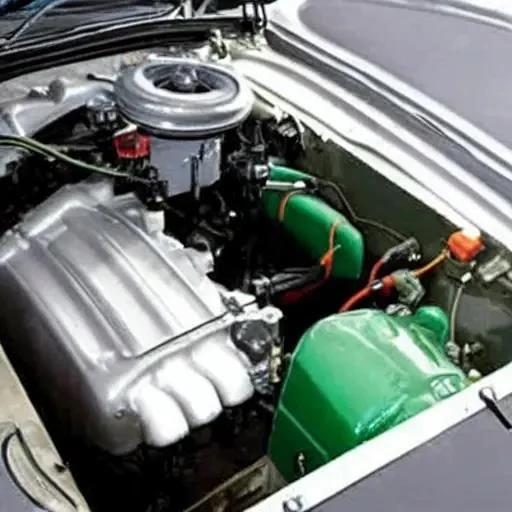
In the intricate symphony of modern automotive engineering, countless components work in harmony to deliver the reliable performance we’ve come to expect․ Yet, amidst the myriad of fluids and systems, one often stands as an overlooked guardian, silently preventing catastrophic failures: the car engine coolant liquid․ Far from a mere accessory, this vital fluid is the very lifeblood of your engine, tirelessly working to regulate temperature and preserve its longevity․ Its significance, incredibly, often goes unnoticed until the tell-tale signs of overheating force an urgent, and often costly, intervention․
Imagine your car’s engine as an elite athlete, generating immense power but also prodigious heat․ Without an effective cooling mechanism, this heat would quickly lead to a meltdown, seizing critical components and rendering your vehicle immobile․ This is precisely where engine coolant, a meticulously engineered blend of antifreeze and distilled or deionized water, steps in․ Typically formulated in a balanced 50/50 ratio, this specialized solution performs a dual role: preventing freezing in frigid temperatures and, crucially, dissipating the scorching heat produced during operation․ Beyond temperature regulation, it is also infused with sophisticated lubricants and anti-corrosion agents, actively protecting delicate metal parts from rust and degradation, thereby ensuring your radiator and hoses remain in peak condition․ By integrating insights from advanced chemical engineering, today’s coolants are more effective and protective than ever before, promising a smoother, more durable future for your cherished vehicle․
| Aspect | Description |
|---|---|
| Definition | A pre-mixed solution of antifreeze (ethylene or propylene glycol) and water, primarily for engine temperature regulation․ |
| Key Components | Antifreeze (glycol-based), distilled/deionized water, anti-corrosion additives, lubricants․ |
| Primary Functions | Prevents engine overheating, protects against freezing, inhibits corrosion, lubricates cooling system components․ |
| Maintenance Frequency | Coolant flush recommended every 3-5 years or 50,000-150,000 miles, depending on manufacturer specifications․ |
| Common Types | IAT (Inorganic Acid Technology), OAT (Organic Acid Technology), HOAT (Hybrid Organic Acid Technology), PHOAT, NHOAT․ Selecting the correct type is paramount․ |
| Risks of Neglect | Engine overheating, catastrophic engine failure, blown head gaskets, corrosion of cooling system components, costly repairs, or vehicle write-off; |
| Reference Link | Learn More About Coolant Maintenance at AutoZone |
The operational brilliance of your engine coolant is truly a marvel of modern mechanics․ As your engine ignites and performs its arduous work, producing considerable waste heat, the coolant actively absorbs this thermal energy․ It then embarks on a meticulously designed journey, circulating through the engine block and into the radiator via a network of hoses․ Within the radiator, the hot fluid is rapidly cooled by the outside air, efficiently shedding its heat before being recirculated back to the engine, ready to repeat its critical task․ This continuous cycle, driven by the water pump, ensures the engine consistently operates within its optimal temperature range, preventing both the destructive forces of extreme heat and the damaging expansion of freezing liquids․ Industry experts, constantly innovating, have developed various coolant chemistries—like IAT, OAT, and HOAT—each tailored for specific engine designs and materials, making the choice of the correct coolant remarkably important for peak performance․
Despite its paramount importance, engine coolant often becomes the forgotten fluid in routine vehicle maintenance, overshadowed by more frequently discussed oil changes․ However, neglecting its upkeep carries severe repercussions․ A mobile mechanic, Lara from Marvellous Cars, recently warned drivers about the thousands they could save by not skipping simple checks․ Over time, coolant degrades, losing its anti-corrosive properties and becoming less efficient at heat transfer, eventually leading to a breakdown of its protective capabilities․ Proactive maintenance, including regular checks of coolant levels and condition, and timely flushes—typically every three to five years or 50,000 to 150,000 miles, as per manufacturer recommendations—is not just advisable; it’s absolutely essential․ Ignoring a low coolant light or deferring a flush can escalate minor issues into catastrophic engine damage, transforming a simple preventative measure into an exorbitant repair bill․
Looking ahead, the future of vehicle longevity is undeniably intertwined with vigilant maintenance of every crucial system, especially the cooling system․ As engine technologies evolve, becoming more compact and powerful, the demands placed on car engine coolant liquid will only intensify․ Embracing a forward-thinking approach to vehicle care, prioritizing regular coolant checks and adhering to recommended flush schedules, will not only safeguard your investment but also contribute significantly to a more sustainable and reliable driving experience․ By understanding the pivotal role this seemingly simple liquid plays, and by committing to its proper maintenance, you are proactively ensuring your vehicle remains a dependable companion on the road, confidently navigating every journey for years to come․
